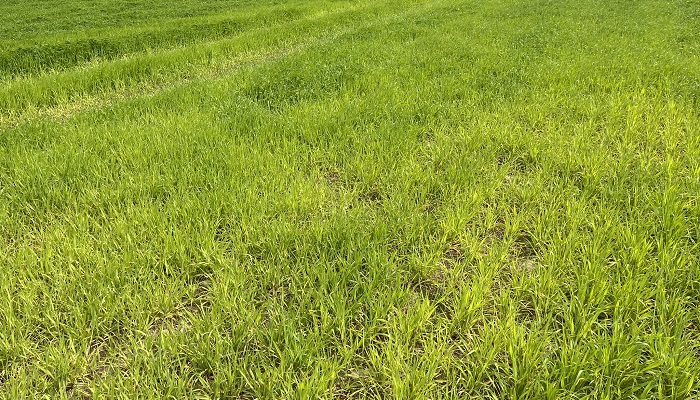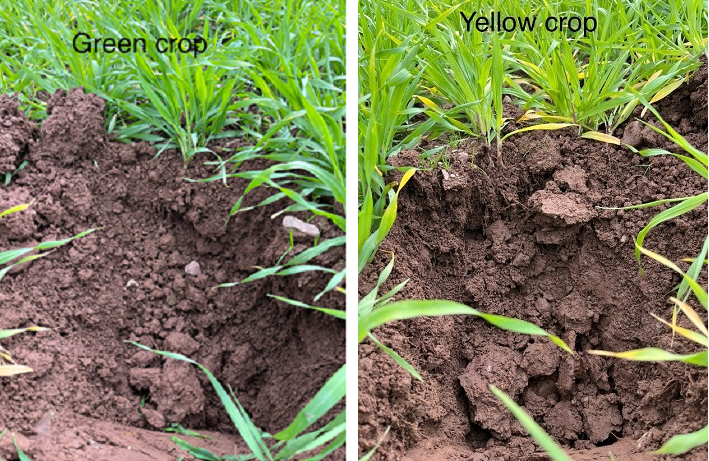06 June 2024
‘Off colour’ spring barley causing concern for growers

Ciaran Collins, Teagasc Crops Specialist, looks at some of the factors leading to spring barley crops being ‘off colour’, and some of the remedial actions required.
Overall, this year’s spring barley crops are better than expected considering that the majority of crops were planted after April 20. Weather conditions have been favourable for crop growth and development; however ‘off colour’ spring barley is causing concern for some growers this week. The causes are varied but yellowing and retarded crop growth from soil compaction is very common. Other issues reported are evidence of BYDV and leaf scorch from herbicide and fungicide application.
Temperature drives crop development. Met Eireann reported this week that May 2024 was the warmest May on record, with an average temperature of 13.08°C. While rainfall in May was below average, crops had enough moisture, and establishment and subsequent crop growth has been excellent. As a result, many crops have reached target shoot counts and have the potential to reach target yield.
However, there are a range of issues affecting some crops that will diminish yield. Soil compaction is common across the country and this is hardly surprising considering how wet land was prior to sowing. While the soil surface was dry and fields were fit to roll post sowing, there was an underlying dampness that has led to some compaction issues.
Spring barley is very sensitive to compaction and more passes over the field will have exacerbated the problem. The symptoms are usually yellowing of the crop as a result of restricted root growth and reduced nutrient uptake. Headlands and wetter parts of fields are worse affected.
It is important to dig a few test holes with a spade to investigate location and the extent of the compaction problem. Figure 1 below highlights the importance of this.
Figure 1: Green spring barley in an uncompacted soil (left) and a yellow spring barley crop in a compacted soil (right)

It is important that the crop receives all its major and micro nutrient requirements, but excess nitrogen or additions of micro nutrients will not alleviate the crop stress. Remedial action will come post-harvest.
BYDV
The amount of BYDV in crops is also causing concern. It was fully expected that BYDV would be an issue in late-sown crops and the majority of growers prioritised the application of an insecticide at the 3-4 leaf stage. Even with a well-timed insecticide, some BYDV symptoms are inevitable. Research and experience tells us that this will not have a significant impact on yield and quality. Rapid growth during the critical period may also reduce the impact. Time will tell.
Herbicide and fungicide applications
Herbicide and fungicide application has also caused crops to go ‘off colour’. The symptoms are normally leaf tip death, pale spot lesions and leaf kinking. This is not uniform across the country and there are varietal variations. An example is one of the DAFM variety trial sites where all varieties got the same herbicide, but there was a large difference in how the herbicide affected different varieties. Spinner was one of the worse affected.
One of the reasons for these symptoms is probably actively growing, leafy crops that have not suffered any stress, ‘soft crops’ will suffer more visual leaf scorch than a ‘tougher’ crop. A good proportion of fertiliser was placed in the seedbed this year and this may also have contributed to some ‘soft crops’.
Disease levels are low but there are cases of Net Blotch and Rhynchosporium, mainly in RGT Planet. Crops have been under stress, so a well-timed fungicide at awn emergence will be vital for the control of Ramularia.
